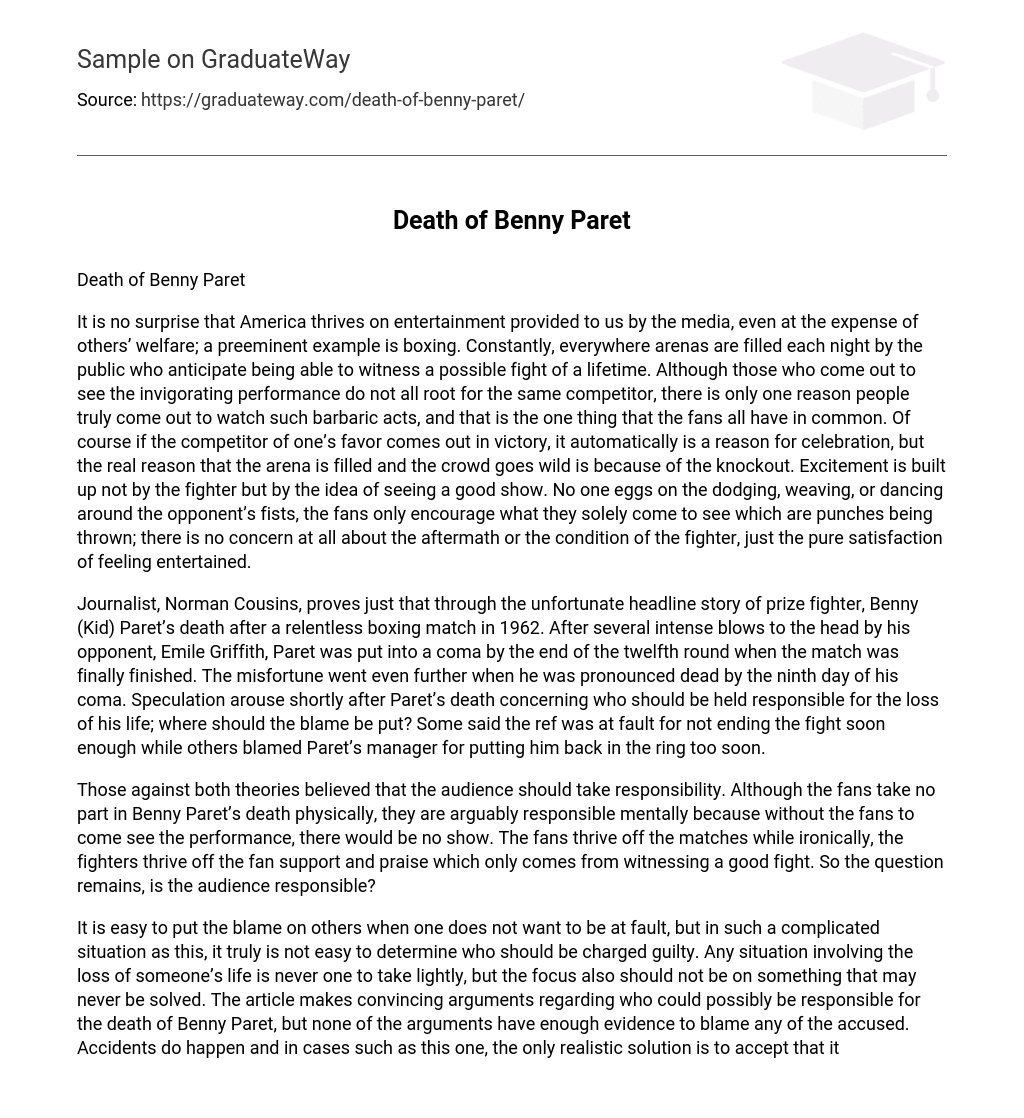America’s reliance on media-driven entertainment, even at the expense of others’ well-being, is expected. Boxing serves as a prime example of this phenomenon. Night after night, eager spectators fill arena seats in anticipation of an unforgettable fight. While not all attendees back the same competitor, they share a common purpose: witnessing a knockout. The true motivation behind these packed arenas and enthusiastic crowds is not to celebrate a favored fighter’s victory but rather the spectacle itself. Spectators have no interest in analyzing techniques or skills; their sole focus is being entertained by punches thrown, disregarding any consequences or concerns for the fighters’ well-being.
Norman Cousins, a journalist, demonstrates this concept through the tragic story of Benny (Kid) Paret’s death in 1962 after a grueling boxing match. Despite enduring many brutal blows to the head from his opponent, Emile Griffith, Paret slipped into a coma during the twelfth round, which ultimately concluded the match. Tragically, Paret was pronounced dead on the ninth day of his coma. Following Paret’s untimely demise, speculation arose regarding who should bear responsibility for his loss of life and where blame should be placed. Some assert that the referee is at fault for not ending the fight sooner, while others point fingers at Paret’s manager for allowing him to return to the ring prematurely.
Those who oppose both theories argue that the audience bears the responsibility. Even though the fans are not directly involved in Benny Paret’s demise, they are arguably accountable mentally because, without the presence of fans in the audience, there would be no show. The spectators derive enjoyment from the matches, while paradoxically, the fighters flourish through fan support and admiration, which can only come from witnessing a captivating fight. Thus, the query persists: is the responsibility on the audience?
Blaming others is convenient for avoiding personal responsibility, but in a complex situation like this, determining guilt is not simple. Taking the loss of a life lightly is never appropriate, but fixating on an unsolvable issue is also counterproductive. The article presents persuasive arguments about potential culpability for Benny Paret’s death, but there is insufficient evidence to assign blame to any of the accused. Accidents occur, and in this case, the most realistic resolution is to acknowledge it as just that—an accident.
Ultimately, the outcome was a sorrowful mishap, and it is regrettable that individuals persist in endorsing such aggressive conduct, but it is merely another facet of our reality. Accidents are inevitable, and individuals will perpetually strive to attribute fault to others for what they perceive as unjust; we must simply acknowledge it as it is.





